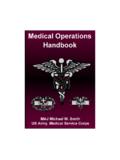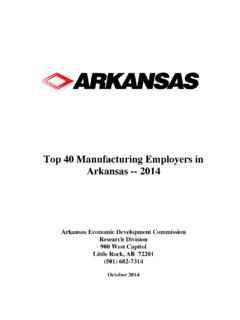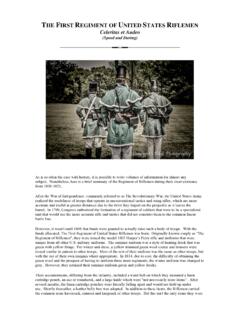Transcription of Forest Service Technology & Development …
1 1 Technology & Development ProgramUnited States Department of AgricultureForest ServiceMarch 200651000651 2312 MTDCFor additional information, contact: John smith , equipment specialist; USDA Forest Service , MTDC; 5785 Hwy. 10 West; Mis-soula, MT 59808 9361. Phone: 406 829 6793; fax: 406 829 6744; e-mail: FireThe Missoula Technology and Development Center was asked to determine the effect of a hardhat s color on the wearer s comfort. Wildland firefighters may select a hardhat s color based on their personal preferences, on the color of hardhats worn by their crew, or on their position in the Incident Command conducted an informal test to evaluate the temperatures inside hardhats of various colors. The hardhats used were all new, cap-style Bullard FH911 Wildfire series hardhats. White, black, red, blue, yellow and orange hardhats were tested. Figure 1 The six hardhats on the test rack were wired to a datalogger that recorded the temperature inside the hardhat every 5 Effect of Color on Temperatures Inside HardhatsJohn smith , equipment Specialist, and Wes Throop, Mechanical EngineerA simple test rack was set up that allowed full exposure of the hardhats to solar heating.
2 Air circulated freely, providing some ventilation to the hardhat. The temperature inside each hardhat and the ambient air temperature at the test site were measured and recorded using type K thermocouples wired to a Campbell Scientific CR10X Datalogger (figure 1). The thermocouples were in the center of each hardhat, 4 inches from the bottom rim, at about the same depth as the top of a wearer s head. Data were collected at 5-minute increments, over a 6- to 7-hour period, for three consecutive days. 2 Test ResultsThe data show a consistent pattern of differential heat absorp-tion by hardhats of different colors. For the three test days, ambient air temperatures ranged from degrees Fahrenheit to degrees Fahrenheit. The weather was mostly sunny with very little wind. During the test period each day, the temperatures inside all six hardhats generally rose above the ambient air temperature. The temperature inside the white hardhat increased the least, with a 3-day average recorded increase of degrees Fahren-heit above the ambient air temperature and a maximum increase of degrees Fahrenheit.
3 The temperature inside the black hardhat increased the most, an average of degrees Fahren-heit with a maximum increase of 23 degrees Fahrenheit. The red and blue hardhats had the next highest temperature increases, averaging and degrees Fahrenheit, respec-tively. The yellow and orange hardhats were relatively cooler, increasing an average of and degrees Fahrenheit, re-spectively (figure 2). The mean ambient air temperature during the warmest hour of the test was degrees Fahrenheit. The average tempera-ture in the white hardhat then was half a degree Fahrenheit cooler than the ambient temperature. During the coolest hour of the test, the mean ambient air temperature was degrees Fahrenheit. The temperature in the black hardhat then averaged degrees Fahrenheit warmer than the ambient air temper-ature. During the warmest hour, the difference in temperature be-tween the coolest and warmest hardhats was just degrees Fahrenheit (white compared to black).
4 During the coldest hour, the difference between the coolest and warmest hardhats was degrees Fahrenheit (white compared to black). Figure 3 illustrates the average increase in temperatures inside hard-hats during the warmest and coldest hours. Figure 3 During the warmest hour of the 3-day test, the difference between the temperature of the ambient air and the temperatures inside hardhats of different colors was less than during the coolest hour of the 2 Hardhats with lighter colors were cooler sometimes dramati-cally so than hardhats with darker colors. The temperature increases are the average difference of the temperature inside the hardhat and the ambient air temperature over 3 days of testing. Hardhat color White Black Red Blue Yellow Orange109876543210 Temperature increase (degrees Fahrenheit)Hardhat color White Black Red Blue Yellow Orange1210 8 6 4 2 0 2 Temperature increase(degrees Fahrenheit)Warmest hourCoolest test shows measurable differences in the amount of heat absorbed by hardhats of different colors.
5 The data support the basic principle that lighter colors absorb less solar radiation, generating less heat inside a hardhat than darker colors. While the heating effect is less pronounced when temperatures are warmest, firefighters wearing lighter colored hardhats gener-ally will be subjected to less heat gain throughout the day. 4 The Department of Agriculture (USDA) prohibits discrimination in all its programs and activities on the basis of race, color, national origin, age, disability, and where applicable, sex, marital status, familial status, parental status, religion, sexual orientation, genetic information, political beliefs, reprisal, or because all or part of an individual s income is derived from any public assistance program. (Not all prohibited bases apply to all programs.) Persons with disabilities who require alternative means for communication of program information (Braille, large print, audiotape, etc.)
6 Should contact USDA s TARGET Center at (202) 720-2600 (voice and TDD). To file a complaint of discrimination, write to USDA, Director, Office of Civil Rights, 1400 Independence Avenue, , Washington, 20250-9410, or call (800) 795-3272 (voice) or (202) 720-6382 (TDD). USDA is an equal opportunity provider and copies of this document may be ordered from: USDA Forest Service , MTDC 5785 Hwy. 10 West Missoula, MT 59808 9361 Phone: 406 329 3978 Fax: 406 329 3719 E-mail: copies of MTDC s documents are available on the Internet at: (Username: t-d, password: t-d).For further technical information, contact John smith at MTDC. Phone: 406 329 3900 Fax: 406 829 6744 E-mail: Service and Bureau of Land Management employees can search a more complete collection of MTDC s docu-ments, videos, and CDs on their internal computer network at: smith joined MTDC in 2005 as an equipment specialist. He graduated from the University of Montana with a bachelor s degree in education and taught elementary school in Ovando, MT.
7 He began his Forest Service career in 1974 as a wildland firefighter on the Superior District of the Lolo National Forest . A Missoula smokejumper for more than 2 decades, John s experience as assistant loadmaster foreman, master parachute rigger, and safety program manager will be applied to fire equipment Development . Wes Throop is a project engineer at MTDC. He received his bachelor s degree in mechanical engineering from the Univer-sity of Idaho in 1983. Wes has worked as a smokechaser, hot-shot, and engine foreman for the Forest Service , and as a civil-ian mechanical engineer for the Department of the Navy. Before coming to MTDC in 1999, he worked as a mechanical engineer at the test reactor area of the Idaho National Engi-neering and Environmental Laboratory near Idaho Falls, the AuthorsSmith, John. 2006. The Effect of Color on Temperatures Inside Hardhats. Tech Tip 0651 2312 MTDC. Missoula, MT: Department of Agriculture, Forest Service , Missoula Tech-nology and Development Center.
8 4 the results of 3 days of tests measuring temperatures inside six different hardhats with colors ranging from white to black. When temperatures were the hottest, the white hardhat Library Cardwas degrees cooler than the black hardhat. When temper-atures were the coolest, the black hardhat was degrees warmer than the white hardhat. The red and blue hardhats were not as warm as the black hardhat and the yellow and orange hardhats were not as cool as the white : comfort, personal protective equipment , temper-atur



















